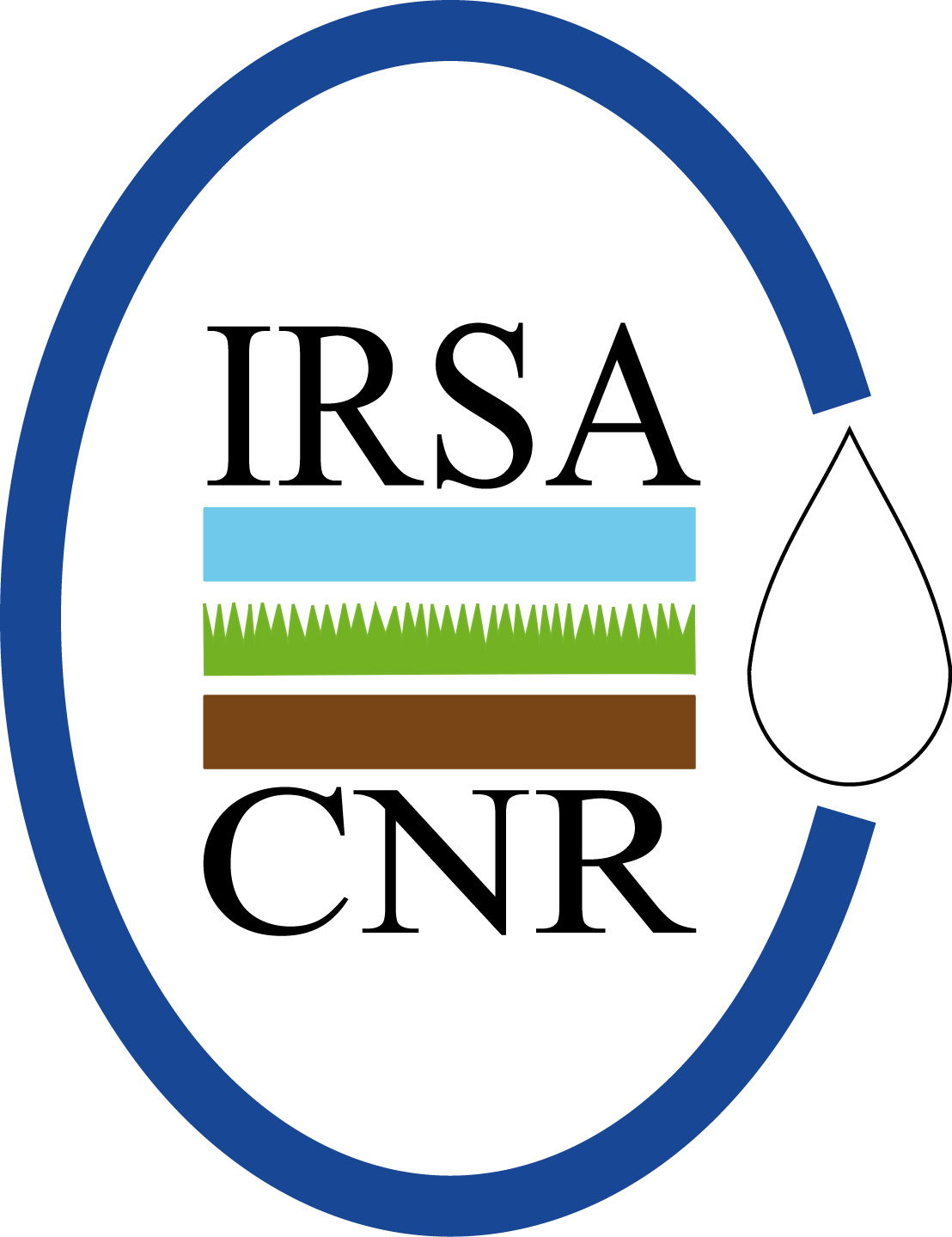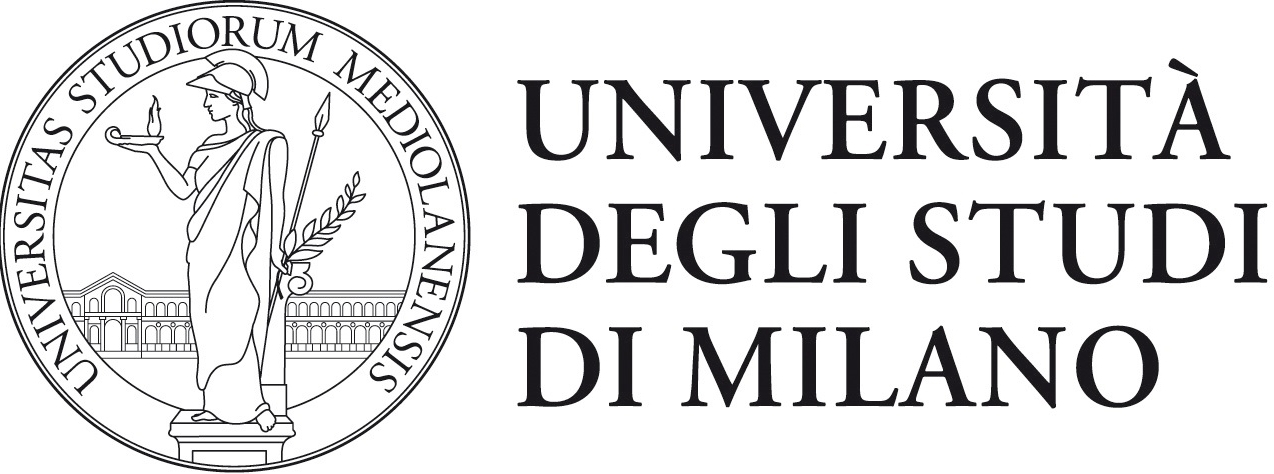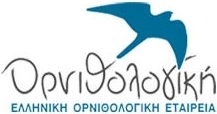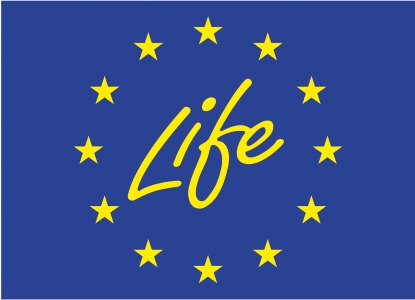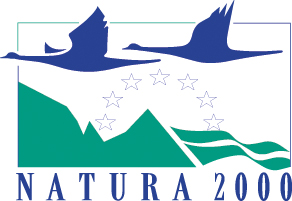PREPARATORY ACTIONS, ELABORATION OF MANAGEMENT PLANS AND/OR OF ACTIONS PLANS
All the preparatory actions needed for the project to be effective and reach its goals: collecting accurate information on the conservation status of the species; designing proper nesting sites and planning how to provide them; identifying the best source populations for hacking actions.
Find out more by reading the deliverables of this actions: click here
- A1 Assessing the conservation status of populations breeding at the northern distribution range and identifying suitable project intervention sites
Essential for the development of the Conservation Actions. Through surveys on the sites of potential colonies, typically old, decaying buildings, we collected detailed information on the localisation and conservation status of existing colonies, including population size, threats and breeding success. Suitables sites were detected through the analysis of aerial maps, identifying old/rural buildings within 20 kms of existing colonies. - A2 Development of technical blueprints for the construction of nesting towers and of protocols for nestbox installation
Also essential for the development of the Conservation Actions. Installing nest boxes and building nesting towers have proven to be effective conservation strategies for the lesser kestrel. It is important then to select the most effective models of nestboxes, providing them with adequate insulation, size, ventilation, and to discuss their installment with councillors and technicians of the involved municipalities.
Nesting towers host a large number of these nestboxes, and were developed by a ISPRA team including civil architects. Agreements for their installment were also made with the administration offices of involved provinces and municipalities, as well with land owners. - A3 Identification of the proper source population for hacking actions in northern italy
A major threat for the lesser kestrel is the ongoing demolition of the old decaying buildings where their colonies have settled. Rapidly moving their nests from these buildings to safe sites is then mandatory for the conservation of the species. Lesser kestrels tend to breed in places where former reproductions and births happened, and show a low dispersal ability.
Hacked nestlings can be moved to these safe nesting sites, where, after leaving them as adults, will return to build their nests, attracting other birds from the wild. Adult caged kestrels are also settled in the nesting towers, to micic the environment of colonies and further increase the chance of wild birds settling in.
However, due to the small size of the lesser kestrel population in the Po Plain, moving nestlings from local colonies might negatively impact these environments. Screenings were conducted in three large size populations in southern Italy, to identify the most suitable source population, whose genetics and behaviours would be most similar to the ones of the Po Plain lesser kestrel, according to IUCN guidelines.
The most suitable source population was successfully identified in Matera.
CONSERVATION ACTIONS
Those actions that concretely help improving the conservation status of the Lesser Kestrel, providing it with more suitable breeding sites and accelerating the colonization of these nests.
Find out more by reading the deliverables of this actions: click here
- C1 Fostering northward range expansion by creating safe and novel breeding opportunities
This action aimed to provide the lesser kestrel with safe nesting places in the target expansion areas. Due to the fast ongoing demolition of the old, unsafe buildings lesser kestrels colonized, it was urgent to build new suitable structures.
Three nesting towers were built in the areas identified within Action A1, and two were built closer to existing colonies, ensuring a better connection between existing populations and target areas for their expansion northward, a key strategy to help the species resilience to the impacts of climate change, and to help the species get acquainted with this type of structures.
200 nextboxes were also installed on rural buildings located close to settled colonies, choosing safe buildings without adequate holes or cavities the birds can use to build their nests. - C2 Enhancing nesting tower colonization
The lesser kestrel tends to build their colonies in sites of previous or existing ones.
Due to the urgency of providing the species with safe, suitable breeding grounds, hacked nestlings are released in the newly built nesting towers, along with caged adults, to mimic the environment of a natural colony. Hacked nestlings and caged adults returned to these nesting sites in previous projects, establishing new colonies and attracting wild birds, proving this effective strategy for the conservation of the species.
MONITORING OF THE IMPACT OF THE PROJECT ACTIONS
Monitoring the success of the safe nests installed, how the adult kestrels will behave in the wild and spread, as well as the effect of the project actions on the restoration of the ecosystem and the socio-economic impact on the involved areas.
- D1 Monitoring of nestboxes and nesting tower occupancy and breeding success
To assess the effectiveness of Action C1, the LIFE FALKON team will evaluate the occupancy rate of nest boxes and nest towers, as well as the breeding success of birds nesting in them.
These nests will be visited regularly in the breeding season after their installation, observing the inside of the nestboxes through small openings designed to inspect the nest without disturbing its occupants, or, where the nests are hardly accessible, with standardized surveys conducted from a distance with binoculars or telescopes. - D2 Monitoring of post-fledging behaviour and natal dispersal of hacked birds
The hacked juvenile lesser kestrel released in the nest towers in the Action C2 are expected to come back in the years after their release, attracting to these sites birds that previously nested in collapsing buildings.
With this Action the LIFE FALKON team aims at assessing whether the released individuals manage to successfully migrate to the African wintering grounds and come back the year after to the hacking site or in surrounding colonies.
All hacked juveniles were made individually recognizable with colour ringing, making it possible for researchers to spot and recognize these individuals around the nesting sites in the following years. However, these individuals might settle in surrounding colonies, making observations more challenging, and colour-ringing would provide no information on migratory behaviour or mortality during migration. To obtain more information, five individuals each year will be equipped with solar-powered, miniaturized satellite transmitters, allowing the team to track their movements via satellite. - D3 Assessment of the socio-economic impact in the project areas
This Action aims to estimate the effects of the LIFE FALKON project on the social and economic welfare of the target communities, as well as the social consensus level of local populations regarding the conservation actions, and the effectiveness of communication and awareness raising campaigns conducted in the E actions.
The stakeholders involved in A, C and E actions, such as architects, geometricians, farmers, local citizens, tourists, teachers, pupils and administrators, will be contacted with anonymous questionnaires. 30 key subjects, such as administrators, members of the scientific community and of wildlife conservation associations will also be interviewed.
The questionnaires and interviews will try to assess the subjects’ attitudes towards the lesser kestrel, their awareness about conservation issues related to this species and to farmland biodiversity, their reaction toward potential problems connected to the lesser kestrel presence, and the perceived social and economic impact of the project. - D4 Assessment on the ecosystem functions restoration of the project actions
Lesser kestrels mainly prey on large invertebrates, such as moles and bush crickets, that are mainly seen as pests by farmers, damaging crops. The lesser kestrels play an important role as a biological control mechanism for these bugs, helping to regulate the ecosystem. The role of raptors as top predators of their ecosystems plays a key role in regulating populations and, through cascade effects, promoting biodiversity, making them adequate sentinels for an ecosystem health. The lesser kestrel can thus serve as an excellent indicator and umbrella for farmlands animals, with actions helping its conservation benefiting a vast number of other species.
The assessment of ecosystem functions will be based on MAES (Mapping and Assessment of Ecosystems and their Services) methodology and indicators. - D5 Update of the dynamic Performance Indicators database
This Action aims to assess the project performance through the use of set of indicators, both during the project duration and for 5 years after the project ends.
These indicators have been selected for four objectives, “Sustainable land use, agriculture and forestry”, assessing the expected surface of the project areas affected by lesser kestrel-friendly agri-environment RPD measures as result of the implementation of targeted communication actions to promote them among farmers, “Improved Nature, Species and Biodiversity”, evaluating the impact of actions on the conservation status and population trends of the species, “Economic performance, Market uptake, Replication”, relative to jobs created as new positions due to the project and the number of conservation and research project on the lesser kestrel that will be approved at least partly due this one, and “Communication, Dissemination, Awareness raising”, concerning the number of individuals reached by the project’s communication, of visits to the project’s websites and social medias pages, and the changes in behaviours in students and key stakeholders targeted by education and communication actions.
PUBLIC AWARENESS AND DISSEMINATION OF RESULTS
All the actions involving internal and external communication, from disseminating the best practices, to educating and raising awareness about the environment in local communities, to networking with other lesser kestrel LIFE projects and conservation experts.
Find out more by reading the deliverables of this actions: click here
- E1 Internal and External Communication Plan and strategies
This Action has the goal to promote the LIFE FALKON project, raise awareness and promote and exchange best practices for the lesser kestrel conservation and between stakeholders, to improve the coexistence between the lesser kestrel and human activities.
The communication of the project targeted key stakeholders, such as architects, geometricians and farmers, decision makers and the international community, such as local authorities, research centers, universities and environmental conservation associations, the educational community, such as pupils, students, teachers and families, and the general public, including tourists.
The project is promoted through a variety of strategies, such as the development of a logo and website, the usage of social networks pages and newsletters, promotional videos, a fun-educational comic and a board game, and other promotion materials such as banners, gadgets, brochures and billboards. - E2 Dissemination of best practices among stakeholders
The deterioration of foraging farmlands habitat and the loss of suitable breeding sites are the main threats to the lesser kestrel. To face this threat, the project contacted key stakeholders such as farmers and their associations, authorities responsible for applying lesser kestrel friendly RPD measures, as well as local stakeholders responsible for building regulations, geometricians and architects.
The action aims to increase these groups’ awareness about lesser kestrel and biodiversity conservation, promote the adoption of lesser kestrel-friendly practices, inform stakeholders on current wildlife regulations and technical solutions to solve human-wildlife conflicts, also using the material produced in Action E1. - E3 Environmental education and awareness raising campaign for local communities
Implementing successful environmental education programmes is an essential step to raise awareness about environmental conservation issues and protected species, such as the lesser kestrel.
Since most environmental attitudes are formed during childhood, children are a key target audience for being sensitized toward biodiversity conservation. This Action aims to foster awareness, knowledge and positive attitudes in pupils and students, through educational seminars for teachers and high school students, educational activities for pupils and excursions to the project sites. - E4 Networking with other lesser kestrel LIFE projects and lesser kestrel conservation experts
The LIFE programme has contributed to build a dedicated network of professionals and managers engaged in the protection of EU species and habitats. Sharing experiences derived from different LIFE projects targeting the same species in different environments and contexts, is a fundamental tool for the success of conservation efforts and to improve the project’s results.
The aim of this Action is thus to realise an effective networking with managers, professionals and conservationists involved in previous or ongoing LIFE projects targeting the lesser kestrel, through maintaining a constant contact between projects, organizing meetings to exchange best practices and present the projects’ results, and participating to the Open Days Week in Bruxelles, promoting the project at an international level. - E5 Transferability and replicability
This action aims at promoting the transferability and replicability of the project’s outputs at the national and international level, creating a positive project-to-policy loop, sharing the best practices and realising effective conservation strategies that can be transposed to other regions.
To ensure this result, the LIFE FALKON project aims at creating a permanent Community of Interest, a permanent network of stakeholders involved in the conservation of the lesser kestrel, including scientists, conservationists and professionals. A practical handbook for replicability and transferability will also be developed and disseminated throughout the EU, explaining the project results and containing clear information on how those results could be used by other territories. A Q&A section will also go through the main problems faced during the project, providing stakeholders with the solutions to issues already solved in different projects. Lastly, the project’s results and outputs will be showcased in a final international meeting for lesser kestrel expert, to be held in Ioannina, Greece.
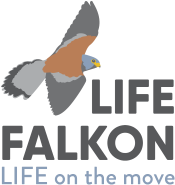
 en
en it
it el
el